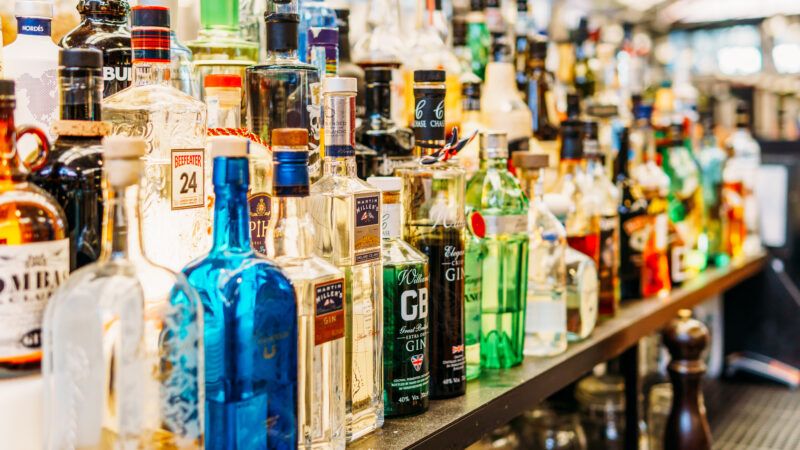What 2022 Taught Us About Freeing American Alcohol Markets
Reformers had two years of unprecedented victories—and then protectionists started using scare tactics to block them

In the first two years of the pandemic, American alcohol rules underwent a fundamental shift. States started enacting emergency orders—and then cementing those orders in legislation—that authorized never-before-seen innovations in alcohol policy, such as letting restaurants and bars deliver booze and sell it to go. But if 2020 and 2021 ushered in new hopes of opening up American alcohol markets, 2022 is the year when protectionism struck back.
In the early months of the pandemic, state governments were reacting in real time to unprecedented circumstances. The new environment included stay-at-home orders, social distancing guidelines, and masking mandates. It no longer became viable for most retail businesses to rely solely on an in-person customer base, as the entire economy shifted over to a delivery-centric model. Restaurants, breweries, wineries, and neighborhood liquor stores all faced an existential business crisis.
States reacted by upending a nearly centurylong consensus on alcohol regulations. Before, it was essentially unheard-of to let a pizzeria throw in a margarita with a delivery order. Then states started issuing emergency orders that allowed it. And practices that had been slightly more common—such as allowing alcohol to be included in grocery store deliveries, which numerous states permitted before COVID-19—spread to an unprecedented number of locales.
Unsurprisingly, these changes proved popular. In states where citizens were polled, strong majorities expressed their support for more types of to-go and delivery booze. Lawmakers can read polls, and a wave of states either extended the reforms or made them permanent.
The results were dramatic. When 2020 began, no place in America had a statewide to-go or delivery alcohol law for restaurants. By the fall of 2021, 29 states had such a law on the books. During that time, another seven states passed laws permitting alcohol delivery from off-premise stores, such as grocery or liquor stores, and eight states passed laws expanding the delivery capabilities of breweries, distilleries, and other alcohol producers.
But in 2022, this explosive rate of reform slowed down. The progress didn't stop altogether: Nine more states passed to-go or delivery alcohol laws for restaurants, and one more state authorized alcohol delivery from off-premise stores. But the pace of change noticeably declined. Worse yet, several reforms suffered high-profile defeats.
In Colorado, two out of three ballot initiatives that would have implemented alcohol delivery and retailing reforms went down in surprising defeat; the one initiative that did pass—to authorize grocery stores to sell wine in the state—passed by only a razor-thin margin. And then there was the California effort to pass a law letting all brewers and distillers ship their products directly to their customers' doors. The version that passed was watered down, so that it applied only to small-scale distillers.
Why the headwinds? Part of the explanation surely lies in the fact that there was less room to grow after the reforms of 2020 and 2021. But the main reason is simpler: The opposition has finally had a chance to get organized. And by the opposition, I mean entrenched economic interests. In Colorado, incumbent liquor store owners felt the proposed ballot initiatives would hurt their bottom lines by allowing other types of stores, like grocery or chain stores, to sell and deliver alcohol. . And in California and elsewhere, alcohol wholesalers have become increasingly aggressive in opposing any direct-to-consumer reforms that would let alcohol makers cut out the middleman and ship products directly to their customers.
Those forces existed in 2020 too, of course. But now they've had more time to formulate and road-test scare stories, such as claiming that alcohol delivery could spike drunk driving or lead to a rise in underage drinking. These claims lack empirical support, but they have achieved a measure of success.
Scare tactics and economic protectionism can be effective. If we are to continue our march toward freer alcohol markets, these intransigent forces will need to be overcome.


Show Comments (26)